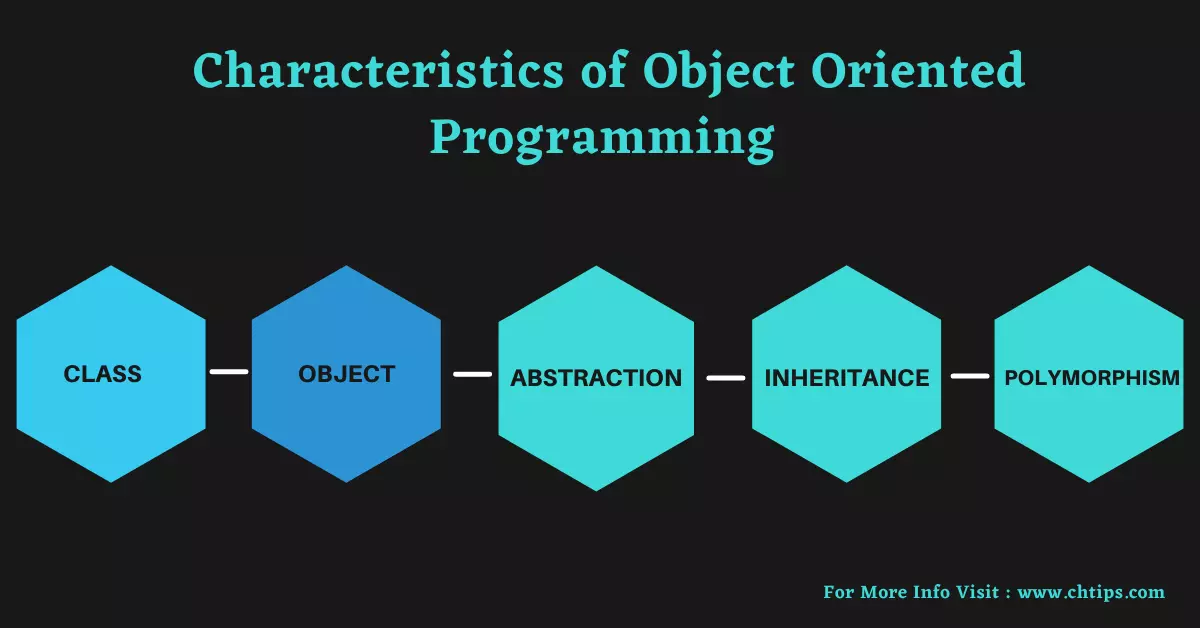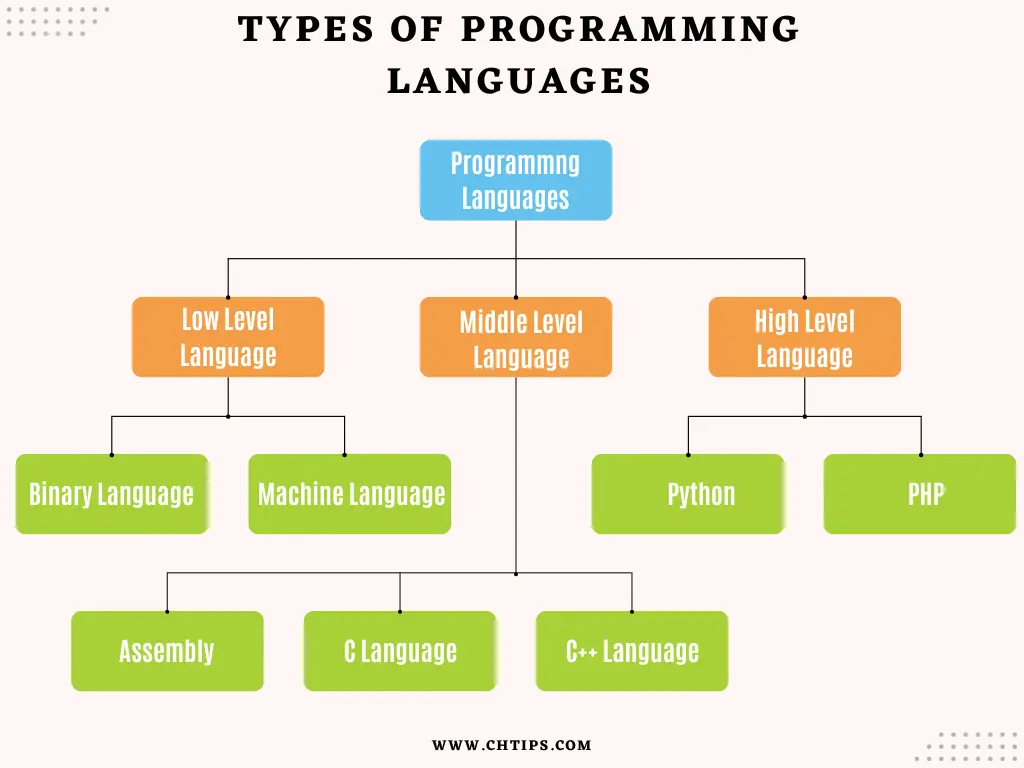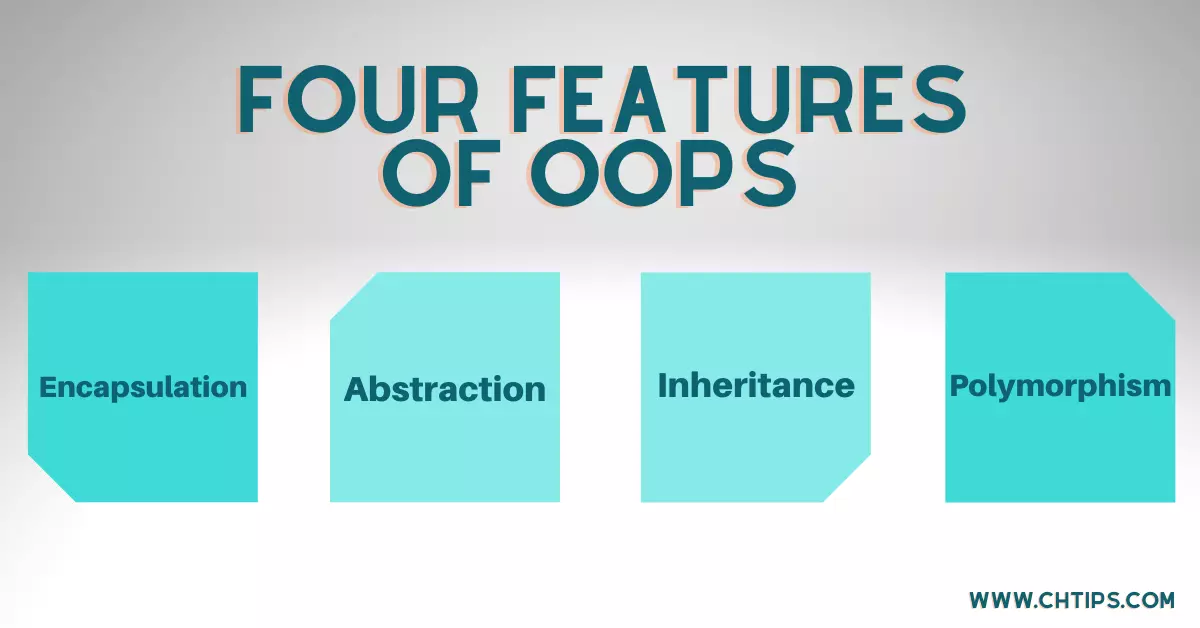There are numerous programming languages that are designed and developed for specific and various purposes.
Some specialize in mobile application development such as Flutter and Dart others are specifically for web applications like PHP and Dot Net.
Programming languages are means of communication between computers and programs to perform specific tasks and derive results that are in human-readable form.
The computer does not understand any languages it only understands and acknowledges 0s and 1s which is a binary language.
The process in which it converts any language and symbol into machine-readable form is called “compiling”.
There are various programming languages that possess distinct features and characteristics which help in designing and developing software also mobile applications.
In this article we will learn what are the characteristics of object oriented programming languages With Examples, types, advantages, principal and features in easy to understand language.
The programs interact with computer systems and also process the data, information, and instructions far more quickly and efficiently to produce more results which is favorable to speed up tasks and jobs.
What is Programming Language?
We use languages to communicate with each other to share ideas, opinions, and suggestions and learn new things and share knowledge.
The language should be known for a good discussion between both parties.
In other words, a computer language is used to help in establishing communication between the computer and the user.
The software engineer or software developers write code or set of instruction which is easily understood by computer to perform certain tasks to derived necessary outputs.
These outputs are easily in human-readable form.
The computer system is unable to understand any human languages it is capable to understand programming languages especially those written by software programmers.
Programming languages are easy to learn and can be used for developing desktop applications, websites, web applications, mobile games, mobile applications, etc.
The development of applications, games, and websites requires a programming language. With the help of a programmer or coder, these applications can be designed and developed.
Characteristics of Object Oriented Programming Languages With Image

Write and Explain the Basic Characteristics of Object Oriented Programming Languages
- Class.
- Object.
- Data Abstraction.
- Inheritance.
- Polymorphism.
#1. Class
A class is a user-defined type of data that has its data members and its functions that can be accessed and used by creating an instance of that same class.
#2. Object
An object is an identifiable entity with a particular function and behavior; an object is an instance of a class.
A class does not take up any memory when defined, but when it is instantiated, it does.
#3. Data Abstraction
Abstracting data is one of the essential characteristics of C++ object-oriented programming.
It refers to hiding the irrelevant details and displaying only the important ones. For example, a man driving a car knows that pressing the accelerators will accelerate the speed and pressing the broken car will stop.
Still, he didn’t know about pressing the accelerators and the brakes, the mechanism of vehicles.
#4. Inheritance
The power of a class to derive and obtain properties and characteristics from another class is called inheritance.
It is the most important feature of object-oriented programming.
#5. Polymorphism
The word polymorphism means having many forms, which clearly indicates the ability of a message to be displayed in multiple forms.
Different Types of Programming Languages

Low-level Programming language
Low-level languages are machine-dependent, so a program written in one is high-speed.
The low-level programming languages do not have compilers and interpreters therefore do not need to compile, interpret or process any program given to them to produce output.
Low-level language can be categorized further into two different types:
Machine level language
A machine-level language is a form of low-level language that is also called “machine code”, “binary code” and “binary language”.
It is displayed in binary code or hexadecimal form. A computer can understand it easily without translating a program because it is easier to understand and interpret.
Assembly language
It is also known as a low-level programming language. It is designed and developed to present instructions and commands to the computer system in a human-readable form.
It also uses assemblers to convert assembly language into machine language.
High-level Programming language
High-level language (HLL) is designed for developing user-friendly software applications and websites. We present instruction in a high-level language, therefore it is quite easier to write and design programs.
This programming language needs a compiler or interpreter to translate and convert the program into machine language.
Further Categorization of High-Level Languages
High-level programming language is further categorized into three types:
- Procedural-oriented programming language
- Object-oriented programming language
- Natural language
What are Object-Oriented Programming Languages With Examples?
Object-oriented programming (OOP) considers a program as a collection of simple and small units of code that are used to create individual examples of objects.
This type of programming relies on classes and objects.
Objects: Object-oriented programming is categorized further into objects.
The objects may represent a person, place, or any other body. Each object has its memory place and associated address.
When a program executes or runs, objects interact by sending a message to each other.
For example:
class client
{
..
..
}
$obj=new client;
Class:
An object belonging to a class is a collection of objects of similar types; after it has been defined, any number of objects can be created.
Objects created in a program are associated with the class they are created in.
Benefits and Advantages of OOPs (Object Oriented Programming) with Examples in Points
- Reusability means we reuse some things rather than using them again and again; we use this with the help of class we do many times.
- Data redundancy is one of the most significant advantages of OOPs; if we want to use the same functionality in the different classes, we created one standard class we called a child class.
- It is easy to change code that is already created; by changing a little in code, we create a new object.
- With the help of abstraction, we show only essential data, and the remaining data are not delivered from this security of data.
- We can separate data into little different parts, so it is easy to solve the problem.
- In OOPs, data can be easily updated, and we distribute work to others based on an object.
Four features of OOPs (Object Oriented Programming)

- Encapsulation.
- Abstraction.
- Inheritance.
- Polymorphism
#1. Encapsulation
In OOP, we encapsulate by binding the data functions that operate on that data into a single unit in class; from these, we can hide private details of a class from the outside world and only expose necessary functionality for interfacing with it.
#2. Abstraction.
#3. Inheritance.
it is the mechanism in which one class acquires the property of another class; we can reuse the fields and methods of the existing class.
#4. Polymorphism.
it permits a certain routine to make use of a variable of various types at different times. It has the ability of a program’s language to offer the exact same interface for numerous various underlying information types.
What are the Major Four Principles of Object-Oriented Programming Languages?
The four basic principles of polymorphism are
- Encapsulation
- Abstraction
- Inheritance
- Polymorphism
What are the Examples of Object-Oriented Programming Languages?
The examples of object-oriented programming languages are
- JAVA
- PYTHON
- PHP
- C++
- PERL
- LISP
- COBOL
- C#
These languages use all the significant features and characteristics of object-oriented programming languages and are hence called “Object Programming Languages” “OOPs.”
People Are Also Reading
- 15 Advantages and Disadvantages of HTML
- Advantages and Disadvantages of PHP
- Advantages and Disadvantages of Assembly Language
- 10 Advantages and Disadvantages of Machine Language
- Advantages and Disadvantages of Low Level Language
- Why is C++ So Hard to Learn For Beginners
- What are the Importance of C Programming Language
- What Language is YouTube Written in
- Is Python Written in C
- Structure of HTML Document With Examples
- What is PLC [Programmable Logic Controller]
- 10+ Advantages and Disadvantages of High-Level Languages
- Advantages and Disadvantages of Subroutines
- C Programming Tutorials
- Computer Basic Tutorials
Get In Touch
I have also written and compiled some articles on computers and telecommunications, and please go through them.
I hope you will like reading it.
I hope that all the questions and queries related to learn and describe what are the characteristics of Object Oriented Programming Languages With Examples, types, advantages ,principal and features in easy to understand language.
If you have any questions related to Object Oriented programming characteristics {OOPs}.Don’t hesitate to get in touch with me, and if you need to add, remove or update anything from the article, please let me know in the comment section or via email.
I will be more than happy to update the article. I am always ready to correct myself.
Please share this article with your friends and colleagues; this motivates me to write more related topics.
!!! Thank You !!!